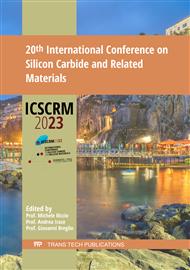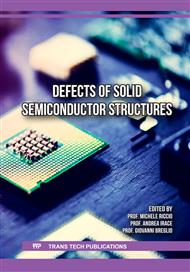p.1
p.7
p.15
p.23
p.33
p.39
p.45
p.51
Body Diode Reliability of 4H-SiC MOSFETs as a Function of Epitaxial Process Parameter
Abstract:
In this paper, the authors continue the experimental evaluation of bipolar degradation for different 1.2 kV SiC MOSFETs. All the devices are stressed by pulsed repetitive forward current through the body diode with current densities varying from 1000 A/cm2 up to 5000A/cm2. The 1.2 kV SiC MOSFETs are split into two major groups based on the differences in epitaxial material (Type A and Type B) that are subjected to the pulsed forward current stress through the body diode. Additionally, there is a third group with Type B epitaxial material, where p+ implantation process at different temperature is applied to evaluate potential impact on bipolar degradation. Devices are electrically characterized on the Keysight B1505A power device analyzer, both before and after stress testing to trace the drift in the electric parameters. Lastly, the drift in parameters observed in some of the devices, are additionally correlated by an electroluminescence (EL) and scanning acoustic tomography (SAT) analysis.
Info:
Periodical:
Pages:
7-13
Citation:
Online since:
August 2024
Permissions:
Share:
Citation:



